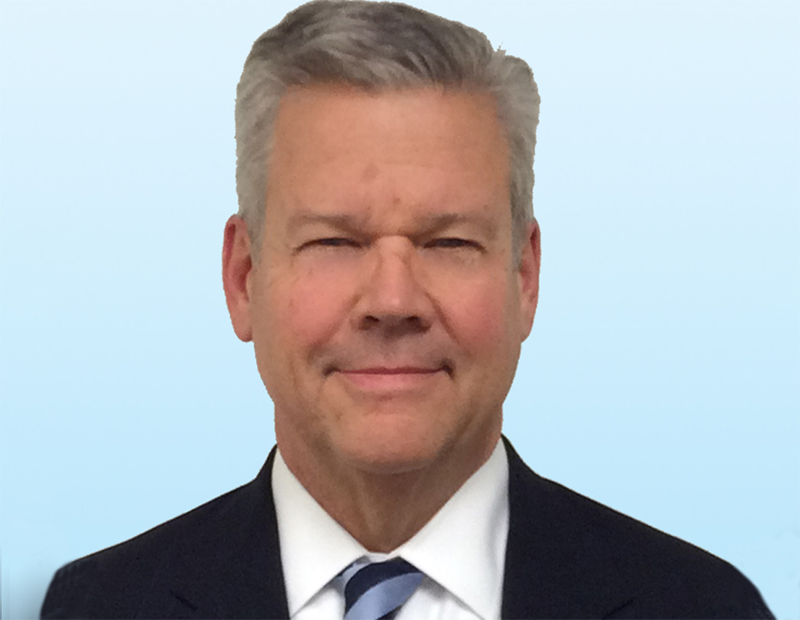Confidence in Self Storage Remains High
Colliers International’s Thomas Gustafson and Ashley Compton discuss the current state of the self storage business and detail what’s driving the sector’s growth.
The self storage industry has established itself as a solid performer in a difficult market. Like every other commercial property sector, it has experienced some effects of the pandemic, yet it is well positioned at a time when the economy faces extraordinary challenges. A slowdown in development activity is helping oversupplied self storage markets restore the balance between supply and demand, while thanks to high occupancy rates, the year-over-year street rate performance was positive for the first time since 2017, according to the latest Yardi Matrix report.
In the interview below, Ashley Compton and Thomas Gustafson, national directors at Colliers International’s self storage division, based in the company’s Nashville and Cleveland offices, discuss the current state of the storage sector and provide insights on what’s driving the industry’s success.
How has the pandemic altered the deal environment for self storage investors?
Compton: Transaction activity has taken a J-shape since the start of the pandemic. Investment activity stalled in April and May while the world adjusted to fighting COVID-19 and established new routines of working remotely. Transactions that were already under contract slowly regained traction in late May. However, travel restrictions for buyers and vendors were dictating how quickly a transaction could advance.
In June, we witnessed a huge spike in buyer interest in the sector due to the REITs reporting strong occupancy through the pandemic and minimal rent concessions related to COVID-19. The relatively low equity requirement to purchase a self storage facility has always been attractive to the entrepreneurial investor. We are witnessing significant capital crossover from other commercial real estate sectors, primarily from multifamily and retail investors. These multiple avenues of capital have created an uber-competitive environment with compressed cap rates.

Thomas Gustafson, National Director, Colliers International. Image courtesy of Colliers International
Gustafson: To the investor, self storage is an attractive asset type for many reasons, but one that stands out is that self storage is the type of facility where people don’t congregate as in office, retail or hospitality settings. There are never more than a few tenants accessing their units in a 90,000-square-foot, 900-unit facility at any given time. Also, accessing your unit, obtaining a lease and paying rent is a contactless experience, as many properties are using remote capabilities. So, from the social distancing perspective, it’s an ideal facility.
Where do you see most self storage deals happen? What markets are buyers interested in and what makes them appealing?
Gustafson: Deals are really happening in all areas of the country. Sellers either realize it’s their time to sell, as is traditionally the case, or they’re very curious about what price can be obtained from the market. Obtaining the right price will be enough to convince owners who otherwise weren’t contemplating selling to sell. We’re seeing significant institutional acquisitions of large portfolios being sold in primary markets at very high prices. The tri-state New York area has sold at high prices, as well as other Midwest portfolios that have come on to the market. Those not yet under contract are anticipated to sell at aggressive pricing levels.
Compton: The availability of third-party management platforms has allowed capital to be invested in the sector without geographic limitations. I have witnessed increased buyer interest in secondary markets in a flight-to-yield trend. Buyer competition for urban assets has driven cap rates to all-time lows, forcing yield-seekers to retreat to secondary and tertiary markets.
Do you expect more activity across the country this year in terms of sales and acquisitions?
Compton: My sales volume is on track to exceed previous years, even with diminished transaction activity in the second quarter. Election years always produce a spike in transaction volume due to concern over potential policy changes of the new administration. Additionally, the resilience of self storage has been highly publicized during the pandemic as other asset classes such as office and retail have had significant headwinds.
Gustafson: Yes, the activity has picked up in many markets as sellers realize they can achieve their pricing, which normally is at levels many buyers weren’t willing to pay, but also because the interest rate environment is so attractive, that the gap between seller expectation and buyer willingness is narrowing. Also, with other real estate sectors such as office, hospitality and retail experiencing dramatic revenue losses, investors are moving their funds towards multifamily, industrial, and, of course, self storage. So now more than ever, the buyer interest in purchasing self storage is elevated.
What can you tell us about the current financing landscape for self storage facilities?
Gustafson: Once the lenders realized they could lend again in May and June 2020, they all opened up and are as aggressive with interest rates and terms as they were before the pandemic. Borrowers have been able to acquire loans in the high 2 percent to 3.75 percent range, with some interest-only loans on overall loan periods up to 12 years. Same with construction loans—those are also awarded at aggressive rates and terms. There is a significant amount of private equity looking to be placed into self storage. Banks, life insurance companies, pension funds and commercial mortgage-backed securities all participate as lenders.
Compton: Financing for self storage is readily available. CMBS debt has a huge appetite for storage debt and has been aggressively quoting storage loans. Life company and bank debt are also readily available with attractive terms. Storage has had very low default rates and foreclosures are almost nonexistent.
READ ALSO: Self Storage Enjoys Pricing Power As Americans Continue to Relocate
Self storage rents have performed well during the past couple of months, proving the sector’s recession-resistant nature. What exactly is driving rent growth?
Gustafson: Self storage properties on the periphery of or within urban areas, particularly with high multifamily density, and areas around university campuses are generally all more than 90 percent occupied and that is driving up the rental rates. Facilities that are in other areas are not seeing the same demand and rental rate growth.
Compton: Demand drives rates. Demand in 2020 has been dominated by the life-altering pandemic. College students have needed storage longer than normal because classes transitioned to e-learning in the spring and most remain virtual at this point.
The shutdown of service jobs, such as waiters, bartenders, hospitality employees and entertainment-based employees, has put a significant financial strain on a large portion of Americans. These service employees are more likely to move back home during financial hardship, trading their apartment rent or mortgage for storage rent. Most storage operators have revenue management algorithms that adjust rates as individual unit sizes increase in occupancy. The above-mentioned circumstances likely had a predominant impact on rental rate increases during 2020.
Do you expect positive rent performance to continue in the upcoming months?
Compton: I see no reason that rates will significantly retreat in the coming months. Even after a vaccine becomes readily available, it will take time for the vaccine to be distributed to the masses. Experts aren’t expecting a return to normality until late 2021 or 2022, meaning there will be a prolonged period that service-oriented employees will likely be furloughed.
Gustafson: Rents are being strained and reduced in markets where new properties have come online, particularly in the smaller submarkets. A strong operator opening a new business with a midsize-to-large property can bring down submarket rents as they compete for tenant share. But these are typically in secondary and tertiary no-growth markets. In terms of those properties positively affected by the pandemic, we forecast those properties will remain at high occupancy and rental rate levels for many months, if not years, ahead.
READ ALSO: Top 5 Markets for Self Storage Development
What can you tell us about supply-demand balance in the self storage industry? When do you expect storage markets to reach equilibrium?
Gustafson: Nationally we’ve seen new self storage facilities being built in all the markets—primary, secondary and tertiary—to the point where there is significant oversupply. However, despite the oversupply “arm waving,” there remain several undersupplied pockets, no matter what the market size or location is. It just takes a closer examination into those markets to understand the trends and dynamics affecting demand, which developers, investors and lenders need to be aware of. With the onslaught of vacated retail boxes due to fallout from the pandemic coupled with developers continuing need to build self storage, we will not see the demand increase generally for quite some time, possibly for 18-24 months in those overbuilt markets.
Compton: A question that I get weekly is: “What cities are undersupplied and could use another facility?” The trade area for self storage is 3-5 miles, meaning every city likely has corridors that can accommodate additional square footage. One of the implications of the recent turmoil in the retail sector will be an influx of big-box conversions to self storage. These conversions are quick and relatively inexpensive, allowing these facilities to decrease rental rates in order to aggressively lease the asset. All in all, the self storage sector is very healthy and will continue to be a highly-sought-after investment for years to come.











You must be logged in to post a comment.